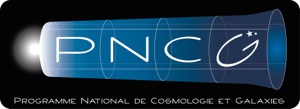Colloque national CMB-France #4
→
Europe/Paris
Amphi Durand (Sorbonne Université (Campus Jussieu))
Amphi Durand
Sorbonne Université (Campus Jussieu)
4 place Jussieu
Description
L'initiative CMB-France vise à mettre en place une animation scientifique au niveau national autour des études CMB (cmb-france.cnrs.fr).
Le CMB-France #4 aura lieu les 22 et 23 Novembre 2022 à l'Université Paris-Sorbonne
(Amphi Durand, Campus Jussieu).
L'inscription est gratuite mais obligatoire: ici.
CMB-France peut prendre en charge les missions (dans la limite des stocks disponibles). Renseignez-vous auprès de M. Tristram.
L’agenda est en cours de finalisation mais l’idée de ces colloques est de:
- présenter les nouveautés scientifiques et les nouveaux résultats dans le domaine
- donner un statut sur l’avancement des expériences ou des projets en cours
- permettre aux jeunes (post-doc, PhD) de présenter leur travail
N’hésitez pas à nous contacter ou à soumettre vos propositions de presentation (avant le 7 Novembre).
Les informations de connexion seront envoyées par la mailing-liste cmb-france. Pensez à vous inscrire.
 Cette action est soutenue par le PNCG.
Cette action est soutenue par le PNCG.Inscription
Inscription
Participants
